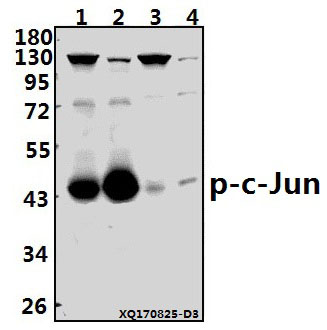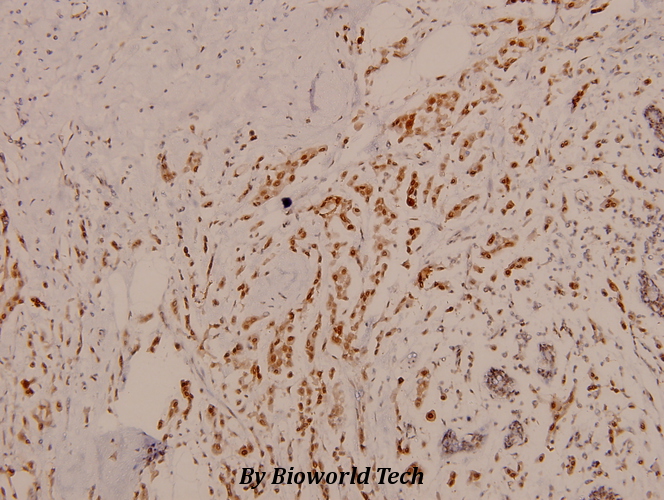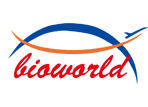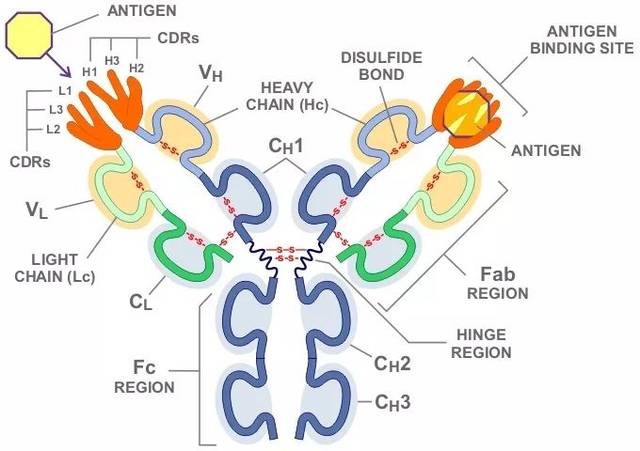Product Name :
c-Jun (phospho-S73) polyclonal antibody Background :
The c-Jun proto-oncogene was first identified as the cellular homolog of the avian sarcoma virus v-Jun oncogene. The c-Jun protein, along with c-Fos, is a component of the AP-1 transcriptional complex. c-Jun can form either Jun/Jun homodimers or Jun/Fos heterodimers via the leucine repeats in both proteins. Homo- and heterodimers bind to the TGACTCA consensus sequence present in numerous promoters and initially identified as the phorbol ester tumor promoter response element (TRE). Two additional genes, Jun B and Jun D, have been shown to be almost identical to c-Jun in their C-terminal regions, which are involved in dimerization and DNA binding, whereas their N-terminal domains, which are involved in transcriptional activation, diverge. All three form heterodimers among themselves and with c-Fos and other members of the Fos gene family. Product :
Rabbit IgG, 1mg/ml in PBS with 0.02% sodium azide, 50% glycerol, pH7.2 Storage&Stability :
Store at 4°C short term. Aliquot and store at -20°C long term. Avoid freeze-thaw cycles. Specificity :
p-c-Jun (S73) polyclonal antibody detects endogenous levels of c-Jun protein only when phosphorylated at Ser73. Immunogen :
Synthetic phosphopeptide derived from human c-Jun around the phosphorylation site of Serine 73. Conjugate :
Unconjugated Modification :
Phosphorylation
c-Jun (phospho-S73) polyclonal antibody Background :
The c-Jun proto-oncogene was first identified as the cellular homolog of the avian sarcoma virus v-Jun oncogene. The c-Jun protein, along with c-Fos, is a component of the AP-1 transcriptional complex. c-Jun can form either Jun/Jun homodimers or Jun/Fos heterodimers via the leucine repeats in both proteins. Homo- and heterodimers bind to the TGACTCA consensus sequence present in numerous promoters and initially identified as the phorbol ester tumor promoter response element (TRE). Two additional genes, Jun B and Jun D, have been shown to be almost identical to c-Jun in their C-terminal regions, which are involved in dimerization and DNA binding, whereas their N-terminal domains, which are involved in transcriptional activation, diverge. All three form heterodimers among themselves and with c-Fos and other members of the Fos gene family. Product :
Rabbit IgG, 1mg/ml in PBS with 0.02% sodium azide, 50% glycerol, pH7.2 Storage&Stability :
Store at 4°C short term. Aliquot and store at -20°C long term. Avoid freeze-thaw cycles. Specificity :
p-c-Jun (S73) polyclonal antibody detects endogenous levels of c-Jun protein only when phosphorylated at Ser73. Immunogen :
Synthetic phosphopeptide derived from human c-Jun around the phosphorylation site of Serine 73. Conjugate :
Unconjugated Modification :
Phosphorylation
-
 Western blot (WB) analysis of p-c-Jun (S73) pAb at 1:500 dilution Lane1:PC3 whole cell lysate(40ug) Lane2:U-87MG whole cell lysate(40ug) Lane3:PC12 whole cell lysate(40ug) Lane4:3T3-L1 whole cell lysate(40ug)
Western blot (WB) analysis of p-c-Jun (S73) pAb at 1:500 dilution Lane1:PC3 whole cell lysate(40ug) Lane2:U-87MG whole cell lysate(40ug) Lane3:PC12 whole cell lysate(40ug) Lane4:3T3-L1 whole cell lysate(40ug) -
 Immunohistochemistry (IHC) analyzes of p-c-Jun (S73) pAb in paraffin-embedded human breast carcinoma tissue at 1:100.
Immunohistochemistry (IHC) analyzes of p-c-Jun (S73) pAb in paraffin-embedded human breast carcinoma tissue at 1:100.
Involvement of JNK and P53 Activation in G2/M Cell Cycle Arrest and Apoptosis induced by Titanium Dioxide Nanoparticles in neuron cells
PMCID: Pubmed No.:20863874
c-Jun N-terminal kinase is involved in the regulation of proliferation and apoptosis by integrin-linked kinase in human retinoblastoma cells
PMCID: Pubmed No.:21234586
Type II cGMP-dependent protein kinase inhibits EGF-induced MAPK/JNK signal transduction in breast cancer cells.
PMCID: Pubmed No.:22427012
Protective effect of celastrol in rat cerebral ischemia model: Down-regulating p-JNK, p-c-Jun and NF-κB
PMCID: Pubmed No.:22575561
Neurotoxic potential of iron oxide nanoparticles in the rat brain striatum and hippocampus
PMCID: Pubmed No.:22995439
Norisoboldine alleviates joint destruction in rats with adjuvant-induced arthritis by reducing RANKL, IL-6, PGE2, and MMP-13 expression
PMCID: Pubmed No.:23396374
ZNF16 (HZF1) promotes erythropoiesis and megakaryocytopoiesis via its regulation on c-KIT gene
PMCID: Pubmed No.:24180487
Cardioprotection of Vitexin on Myocardial Ischemia/Reperfusion Injury in Rat via Regulating Inflammatory Cytokines and MAPK Pathway
PMCID: Pubmed No.:24228599
TRAF1 is a critical regulator of cerebral ischaemia–reperfusion injury and neuronal death
PMCID: Pubmed No.:24284943
Long-term blue light exposure induces RGC-5 cell death in vitro: involvement of mitochondria-dependent apoptosis, oxidative stress, and MAPK signaling pathways
PMCID: Pubmed No.:24682673
Disulfiram targeting lymphoid malignant cell lines via ROS-JNK activation as well as Nrf2 and NF-kB pathway inhibition.
PMCID: Pubmed No.:24915933
3, 3'-Diindolylmethane attenuates cardiac H9c2 cell hypertrophy through 5'-adenosine monophosphate-activated protein kinase-α
PMCID: Pubmed No.:25816057
The Upregulation of TRAF1 Induced by Helicobacter pylori Plays an Antiapoptotic Effect on the Infected Cells
PMCID: Pubmed No.:27060717
microRNA-23a,-27a and-24 synergistically regulate JAK1/Stat3 cascade and serve as novel therapeutic targets in human acute erythroid leukemia
PMCID: Pubmed No.:27086927
ZNF16 (HZF1) promotes erythropoiesis and megakaryocytopoiesis via its regulation on c-KIT gene
PMCID: Pubmed No.:24180487
Cardioprotection of Vitexin on Myocardial Ischemia/Reperfusion Injury in Rat via Regulating Inflammatory Cytokines and MAPK Pathway
PMCID: Pubmed No.:24228599
The Upregulation of TRAF1 Induced by Helicobacter pylori Plays an Antiapoptotic Effect on the Infected Cells
PMCID: Pubmed No.:27060717
microRNA-23a,-27a and-24 synergistically regulate JAK1/Stat3 cascade and serve as novel therapeutic targets in human acute erythroid leukemia
PMCID: Pubmed No.:27086927
TRAF1 is a critical regulator of cerebral ischaemia–reperfusion injury and neuronal death
PMCID: Pubmed No.:24284943
Long-term blue light exposure induces RGC-5 cell death in vitro: involvement of mitochondria-dependent apoptosis, oxidative stress, and MAPK signaling pathways
PMCID: Pubmed No.:24682673
3,3'-Diindolylmethane attenuates cardiac H9c2 cell hypertrophy through 5'-adenosine monophosphate-activated protein kinase-α
PMCID: Pubmed No.:25816057
Protein kinase Ds promote tumor angiogenesis through mast cell recruitment and expression of angiogenic factors in prostate cancer microenvironment
PMCID: Pubmed No.:30841931
Bioworld Biotech only provide peptides for our antibodies and do not provide additional peptide customization services.
Price/Size :
USD 368/1mg/vial
Tips:
For phospho antibody, we provide phospho peptide(0.5mg) and non-phospho peptide(0.5mg).Describe :
Blocking peptides are peptides that bind specifically to the target antibody and block antibody binding. These peptide usually contains the epitope recognized by the antibody. Antibodies bound to the blocking peptide no longer bind to the epitope on the target protein. This mechanism is useful when non-specific binding is an issue, for example, in Western blotting (WB) and Immunohistochemistry (IHC). By comparing the staining from the blocked antibody versus the antibody alone, one can see which staining is specific; Specific binding will be absent from the western blot or IHC performed with the neutralized antibody.Formula:
Synthetic peptide was lyophilized with 100% acetonitrile and is supplied as a powder. Reconstitute with 0.1 ml DI water for a final concentration of 10 mg/ml.The purity is >90%,tested by HPLC and MS.
Storage:
The freeze-dried powder is more stable. For short time at 2-8°C. For long term storage store at -20°C.
Note :
This product is for research use only (RUO only). Not for use in diagnostic or therapeutic procedures.
 c-Jun (phospho-S73) polyclonal antibody
c-Jun (phospho-S73) polyclonal antibody  Datasheet
Datasheet COA
COA MSDS
MSDS SHIP
SHIP